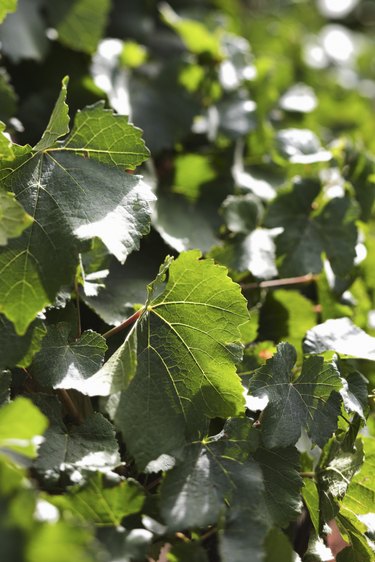
True ivies, such as English ivy, Boston ivy and Algerian ivy, do not produce seed pods, but small blue to black berries. Poison ivy produces whitish-gray berries. However, several vining plants resemble ivy and produce seed pods. Most of these plants are annuals that die with the first heavy frost.
Varieties
Video of the Day
Several annual vines produce seed pods. Try balloon flowers, scarlet runner beans or hyacinth bean vines for ivy-like vines that produce pods. Five-leaf akebia is a perennial vine that produces small purple flowers followed by occasional fleshy pods.
Video of the Day
True Ivy
Although ivy plants do not produce pods, they have many other attributes that make them fine landscaping plants. English ivy is an evergreen plant ideal for partial shade, while Boston ivy is a hardy deciduous vine related to Virginia creeper. It produces large, lobed leaves that turn brilliant red or purple in the fall. Both plants scramble over walls and up structures via aerial rootlets.
Growing Conditions
When selecting ivy-like vines, choose those that are well-suited to your region. Most flowering vines prefer full sun and well-drained soil. Ivy may become invasive in mild, humid regions. Prune it back to control it and don't grow it near a natural area where it could escape. Ivy has been known to smoother native vegetation, reducing plant diversity and food sources for animals.
Cautions
Many vines, including ivy, have fruit or seeds that are toxic. Bittersweet and morning glory both produce poisonous berries or seeds. Avoid planting toxic vines where children or pets have access to them.
- Purdue University Extension; Vines: Growing a Living Screen; Jill MacKenzie; February 1999
- Purdue University Cooperative Extension; Annual and Perennial Vines; B. Rosie Lerner, et al.; November 2002
- Clemson University Cooperative Extension; Ivy; Marjan Kluepfel, et al.; March 2007
- Colorado State University Extension; Annual Vines; Judy Sedbrook